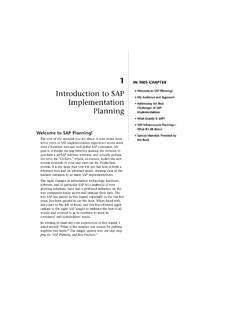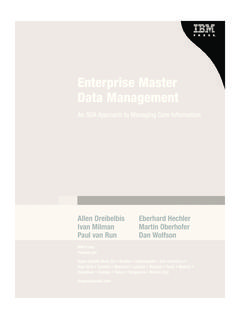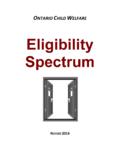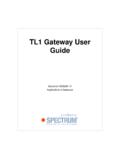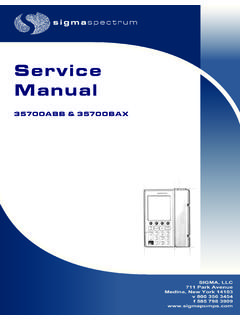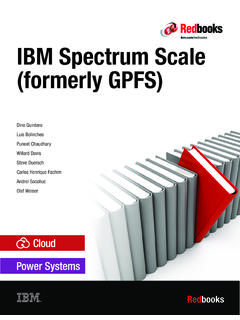Transcription of Microwave Network Design - cdn.ttgtmedia.com
1 Professional Engineering 6X9 / Microwave Transmission Networks / Lehpamer / 122-2 / Chapter 5. Chapter Microwave Network Design 5. Introduction After the preliminary Microwave Network plan has been approved, detailed Microwave Network Design has to be completed. Site acquisi- tion, Microwave Network Design , RF Design (in case of wireless Network build-out), and interference analysis are done simultaneously. In most cases, the results are mutually dependent. That means that none of these activities can be done without consultations with and input from the other three. It also means that a project manager has to make sure that these groups of experts talk to each other on a daily basis, which can sometimes present a challenge. The results and deliverables of the Microwave Network Design process will be used during the deployment stage for the actual installation and testing of the Microwave system.
2 Microwave path (link) calculations are performed as a part of detailed Microwave system Design , and all the detailed hardware requirements (bill of materials) are defined based on this information. The Microwave Design software tools are used for detailed path engineering and interference analysis. spectrum Management Availability of spectrum Throughout the last 100 years, the perception has always been that there is not enough spectrum available. However, technology contin- ues to resolve this problem by making more spectrum usable. For example, the upper limit of the spectrum managed by the ITU-R has changed throughout the years; 200 MHz (pre-1947), GHz (1947), 185. 185 1/16/10 12:14:54 PM. Professional Engineering 6X9 / Microwave Transmission Networks / Lehpamer / 122-2 / Chapter 5. 186 Chapter Five 40 GHz (1959), 275 GHz (1971).
3 300 GHz is the practical limit of radio frequencies and the beginning of the spectrum where electromagnetic radiation starts to become light. Further increases in radio spectrum capacity now require the more efficient use of the existing spectrum . Congestion of the radio frequency spectrum requires sharing many frequency bands among different radio services and among the differ- ent operators of similar radio services. National administrations will allocate some or all these bands for fixed Microwave radio use in line with local requirements. To ensure the satisfactory coexistence of the systems involved, it is important to be able to predict, with reason- able accuracy, the interference potential among them, using prediction procedures and models that are acceptable to all parties concerned and that demonstrated accuracy and reliability.
4 Radio regulation is managed at the international level by the ITU. Within the , spectrum management is divided among two agencies;. the FCC for the private sector and state and local governments, and NTIA (National Telecommunications and Information Administration). for federal government users. The primary agency responsible for interstate and international com- munications in the is the Federal Communications Commission (FCC), which is an independent government agency directly respon- sible to Congress. Each state also has some regulatory authority over intrastate carrier and local service. The Wireless Telecommunications Bureau (WTB) oversees cellular and PCS phones, fixed Microwave , pagers and two-way radios. This bureau also regulates the use of radio spectrum to fulfill the communications needs of businesses, local and state governments, public safety service providers, aircraft and ship operators, and individuals.
5 NTIA was created in 1978 as part of the Executive Branch reor- ganization. It transferred and combined functions of the White House's Office of Telecommunications Policy (OTP) and the Commerce Department's Office of Telecommunications. The OTP was created during the Nixon Administration to provide the president a direct hand in the regulation of media. Its advisory function was placed in the NTIA. The NTIA Organization Act of 1992 codified NTIA's author- ity and organization. The DoD (Department of Defense) is the largest government user of spectrum in the It uses the radio spectrum from ELF. band through close to 100 GHz in the Extremely High Frequency (EHF) band. Before Microwave Network planning commences, the operator must determine the available frequency bands and channel plans that are specific to the country (and the local area) in which the Network will operate.
6 There has been a recent trend toward spread spectrum 186 1/16/10 12:14:54 PM. Professional Engineering 6X9 / Microwave Transmission Networks / Lehpamer / 122-2 / Chapter 5. Microwave Network Design 187. Microwave links that do not need to be individually licensed. This includes Part 15 transmitters operating in several industrial, scien- tific, and medical (ISM) bands, the 5 GHz unlicensed (license-exempt). national information infrastructure (UNII) bands, and many new bands that are licensed by geographical area. Users of a common band of radio frequencies must follow a procedure of radio frequency coordination so as to minimize and control potential interference among systems. Frequency coordination is a multilateral process that involves the cooperative sharing of technical operating information among parties utilizing the same spectrum .
7 In the , the procedures are based on the Federal Communications Commission's (FCC's) coordination and licensing requirements (found in Rule Part 101) as well as on related industry practices that have evolved over the years. The radio license applicant must determine if the planned radio system will experience any interference from the existing environ- ment, and vice versa. Potential interference can be calculated for three different cases: 1. Interference between Microwave stations 2. Interference between Microwave stations and Earth stations 3. Interference between Microwave stations and a geostationary satel- lite in orbit In the , the 4 GHz band is shared with the receive portion of an Earth station and is used predominantly by AT&T and some other long- haul carriers although use of this band by terrestrial Microwave has declined significantly in the past ten years.
8 The 11 GHz band is also shared with receiving Earth stations using Intelsat or PanAmSat satellites. The number of Earth stations licensed in this band is relatively small at this time, while the terrestrial micro- wave in this band continues to grow. Regulations for telecommunications are contained in Title 47 of the Code of Federal Regulations (otherwise known as the FCC Rules), and rules for the use of Microwave transmitters in the bands above 3 GHz for common carriers are contained in Part 101. Part 101 con- solidates the old Part 21 and Part 94 rules for the bands above 3 GHz into one set of rules for both common carriers and private operational fixed users. All frequency bands under Part 101 are available for both types of user. The FCC does not maintain an online copy of the rules; however, the Government Printing Office (GPO) does have an online search location at the following web-page: To find the Part 101 rules, enter 47 CFR101 as the search criterion.
9 187 1/16/10 12:14:54 PM. Professional Engineering 6X9 / Microwave Transmission Networks / Lehpamer / 122-2 / Chapter 5. 188 Chapter Five Intersystem and Intrasystem Frequency Coordination Sometimes, an operator may be able to obtain a number of frequency allocations as a block, enabling Network planning to be performed in advance, without the risk of interference from other users. Most regu- latory authorities also operate a local link length policy whereby the length of a particular path will determine what frequency bands are available from which the operator may choose. Typically, the shorter the path, the higher the frequency required. The local requirement for equipment type approval will also vary from country to country, ranging from a simple paperwork exercise to a full product test program to local standards.
10 Type approval is generally the responsibility of the radio supplier, but an operator should ensure that all requirements are satisfied before any links are deployed. In most other cases, the first step is to perform intrasystem fre- quency coordination (within its own Network ) and then, if the results are satisfactory, perform intersystem frequency coordination. A radio license applicant must determine if the planned radio system will experience any interference from the existing environment or create interference within it. Potential interference can be calculated for the three different cases described previously. The Design of radio links to achieve a particular performance objec- tive is based on equipment and propagation behavior, taking account of intra- and intersystem interference. Many times during the intersystem interference analysis, it may become necessary to change certain param- eters of the Microwave link and therefore modify the original Microwave transmission Design .


